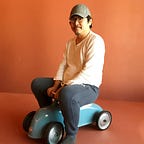Design Ops (More than User friendly) — Intro
For the past fifteen years, I have been leading several design and usability engineering teams in different companies covering more than thousands of products either software, hardware, and services, launched, killed, succeeded, or failed. We know when we choose this career with a passion for creating the most user-friendly products that benefit the users as well as business, we aim to stay disciplinarily on practicing UX design methods and expecting that the design really adds value to the business. But questions often asked are “does the good UX design equals good product?”, “Can design really benefit to companies?”, or “Do we really play a critical role in corporations that steers decision making for products to the market?
Often we heard that from designers complaining about their voice wasn’t being heard. They are struggling to get stakeholders on board to understand their concept of design and how designers see the world. They think business operators are practically dominant and stubborn to hear what design teams suggest especially ideas by design practice. I got many similar questions like these when I gave speeches in conferences and courses. Why has it been so hard for us to manifest after so many years of UX promulgation which evangelized by many pioneers, mentors, and teachers in this field through education, and promotions? Why are these questions still around especially how UX practitioners always feel they are less influential on company’s decision-making process in many cases or why, in the other end, corporations have difficulty evaluating these intangible assets such as creativity and design.
In 2020, the COVID-19 pandemic happened. The value of UX design in the organization controversy came to the fore. Many companies like Airbnb, Uber, and Lyft let go of thousands of employees including a large portion of designers and researchers, a result to that, lots of UX community leaders were trying to establish social networks to help these in-between practitioners find their next landing. It once again raised to us the question of why design and user research jobs are not that important as it seems when it comes to a crisis like this. As we all know the difficulties design organizations are facing, how come we are still not able to solve this? I believe the reason is we hardly manage “design”.
In most cases, the struggles that happened are due to miscommunication and expectations. Designers expect the outcome so high, but stakeholders tend to solve the problem at hand. It related to how designers are trained? In the webinar that held by Interaction Design Foundation on 18, September 2020, Don Norman, the director of the Design lab, UCSD, one of the iconic mentors of UX, addressed a similar argument that most designers backgrounds are from design and art and they are known as artistic brain training including visual imaginary, persuasive storytelling, and creative process. This type of training leads to the result that designers tend to think about framing greater landscape rather than focusing on rule by logic. This free thinker nature causes the gap between business functional teams and design teams in the communication sessions. As part of the operational loop in the company, the design team really has to understand its position and responsibility in the process that stakeholders expecting and with the right tools and the right language to communicate. Although Don Norman suggested designers to attend MBA to get more insights of business perspectives, but we cannot expect all the designers to take other tracks of training like engineers or businesses for them to gain the know-how of operations. As an organization, we need to be able to create a system or structure which allows two types of minds to collaborate and to be measured.
We have to understand when we work, everything is reliant upon something else. All dots are connected to provide the outcome. As a creative mind-free team, surely need a structure or disciplined way to manage the operations to stay well connected with the system. To become influential we have to understand how an organization runs and does jobs.
I am going to tell you stories from more than 15 years of experience in managing design teams that may or may not be structured to help you to understand how we successfully run a design organization or fail to be a good one. These cases and summarised methods will help you understand the elements of running a design organization that can be influential to the company or is able to deliver products on market with more design driven approaches.
to be continued…
